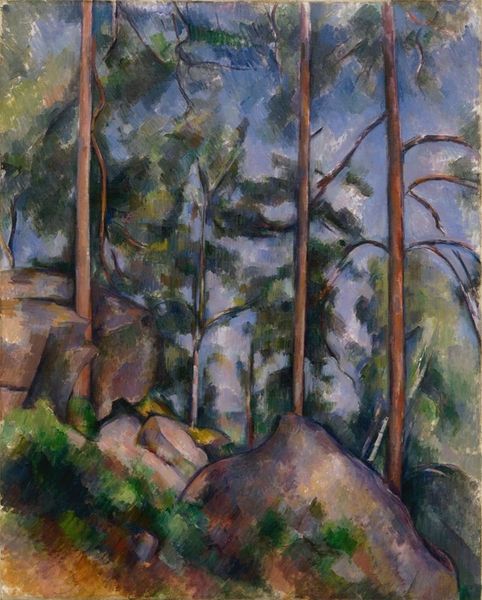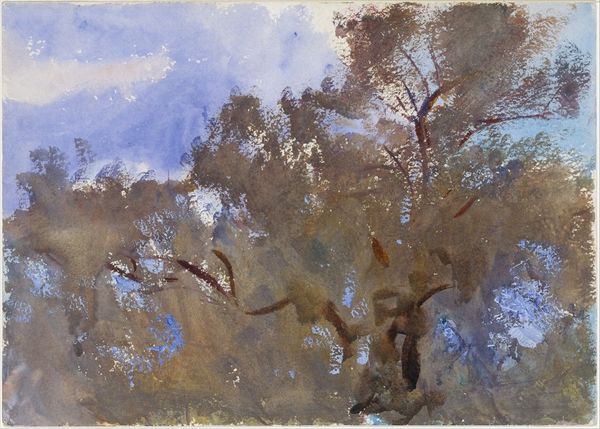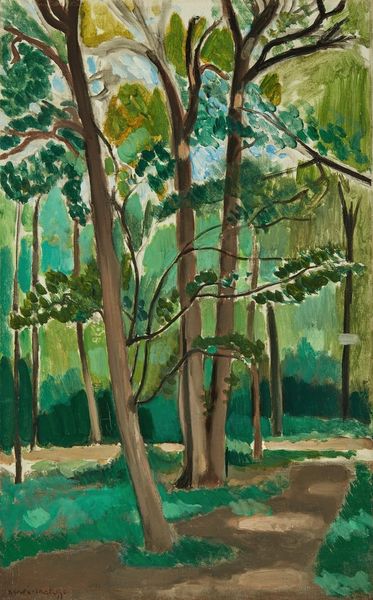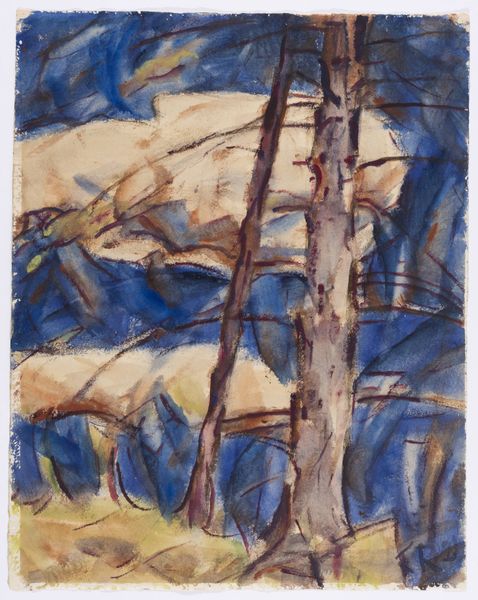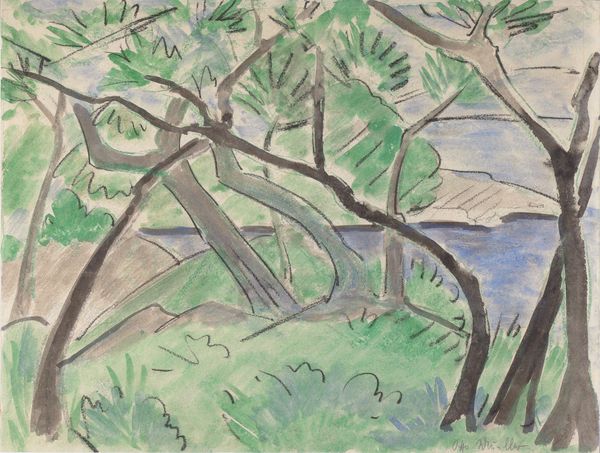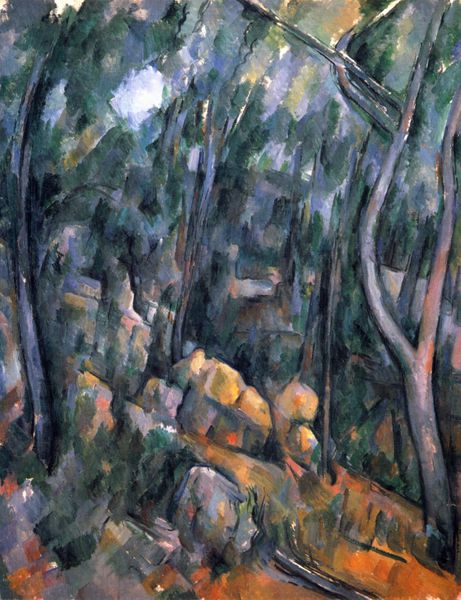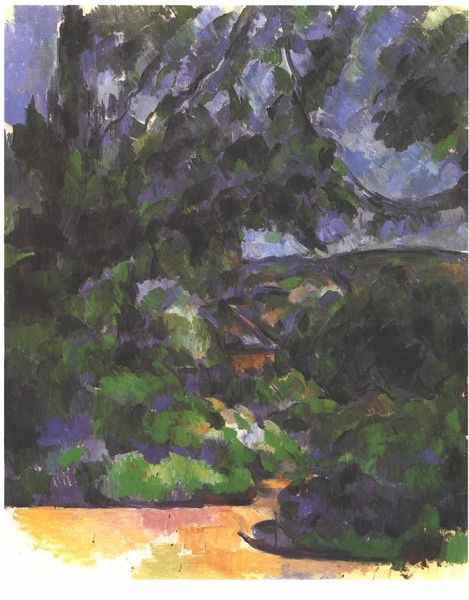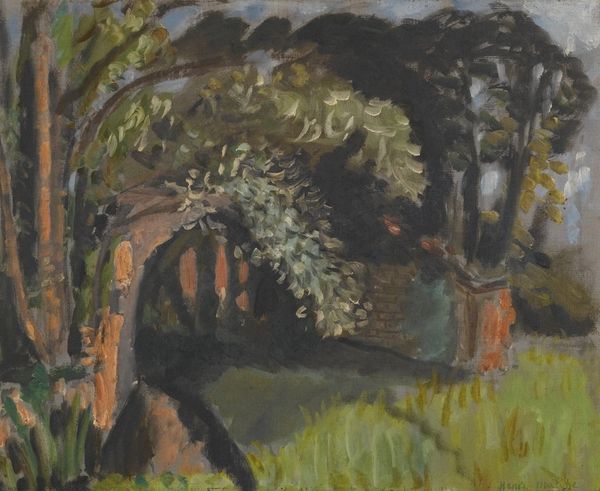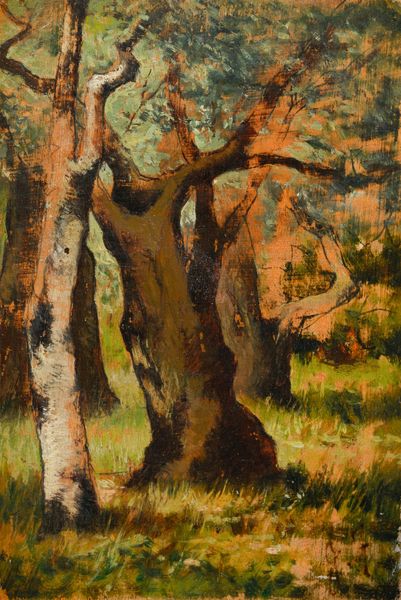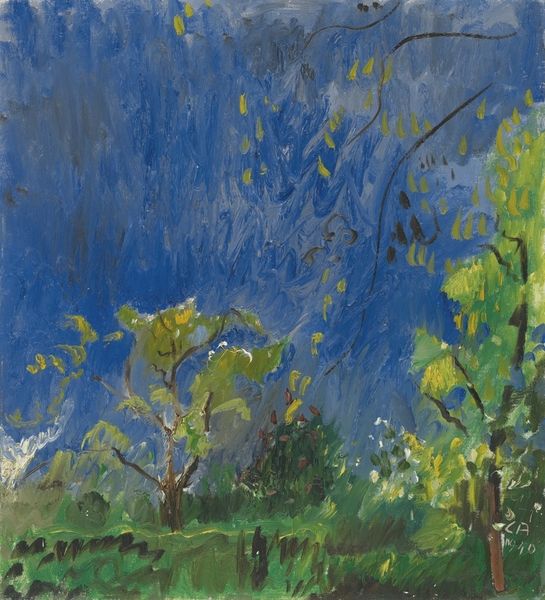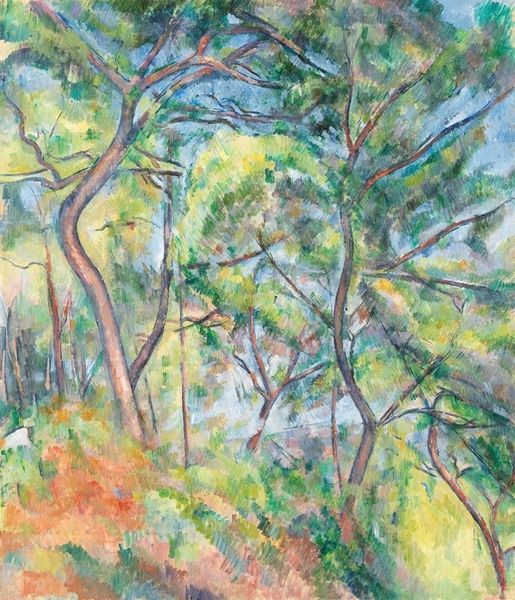
Dimensions: 85.5 x 75.5 cm
Copyright: Public domain US
Curator: Konchalovsky's "Oak Tree," painted in 1921, offers us a glimpse into his exploration of natural forms using watercolor. Editor: It feels enclosed, almost claustrophobic. The dominance of greens and browns is a little oppressive. Curator: I can see how the density of the foliage and the close-up perspective might evoke that feeling. But think about the period. Konchalovsky painted this in the wake of revolution and profound social upheaval. Doesn't that lend a different layer of meaning? Perhaps this dense, even tangled, view of nature is reflective of a world in disarray, a retreat into the stable and enduring form of nature during a period of chaos. Editor: Possibly. But focusing on form, the composition relies on a compelling interplay of light and shadow. Notice how Konchalovsky uses short, deliberate strokes to construct the textures of the leaves and bark. There’s almost a cubist sensibility at play in the fragmented surfaces. Curator: Absolutely, we see post-impressionist influences in his brushwork but considering his generation was profoundly shaped by the events unfolding in Russia and Europe at large, can't we consider this image, though appearing to simply depict nature, is also a testament to the human spirit enduring, and persisting, even in times of fragmentation. The oak, as a symbol of strength and resilience becomes especially potent in the context of that particular moment in time. Editor: A persuasive reading. Still, for me, it’s the purely formal relationships – the dark verticals against the dappled light – that hold my attention. Curator: And the dialogue between representation and abstraction Konchalovsky creates! But consider this too: forests and trees often hold symbolic weight in folklore and cultural narratives, often tied to ideas of refuge. This tree provides shelter to animals but perhaps Konchalovsky uses this imagery as something much larger. Editor: I am still drawn to the overall tonal unity – it harmonizes despite the complex texture. Ultimately, it seems that his trees exist because of the way that Konchalovsky builds up colors. Curator: An interesting tension isn't it – nature represented while also alluding to his experience with revolutionary events and the shift it produced culturally. Editor: Indeed. Thank you. I leave with a much greater appreciation for the complex nature that art inhabits.
Comments
No comments
Be the first to comment and join the conversation on the ultimate creative platform.
